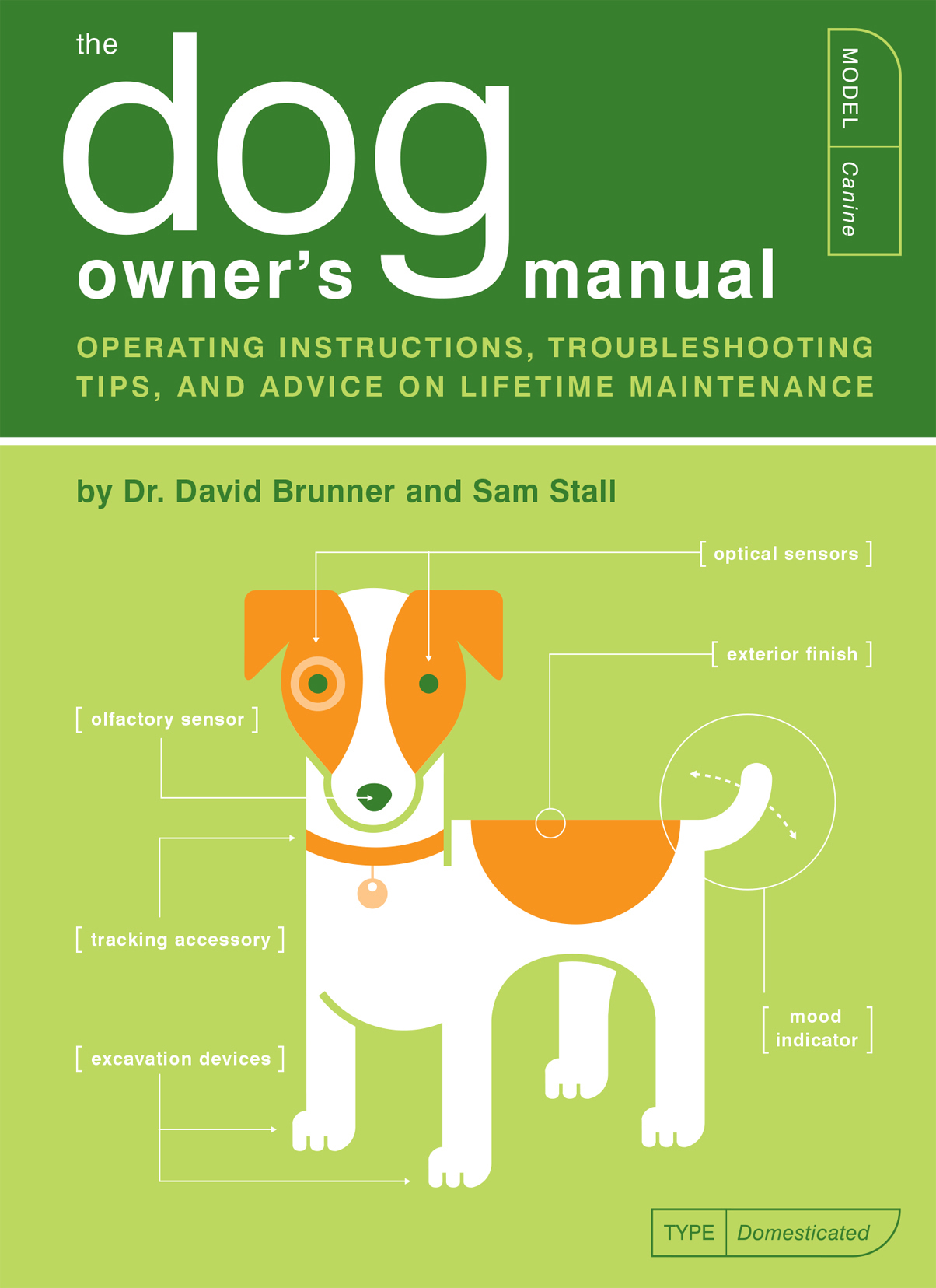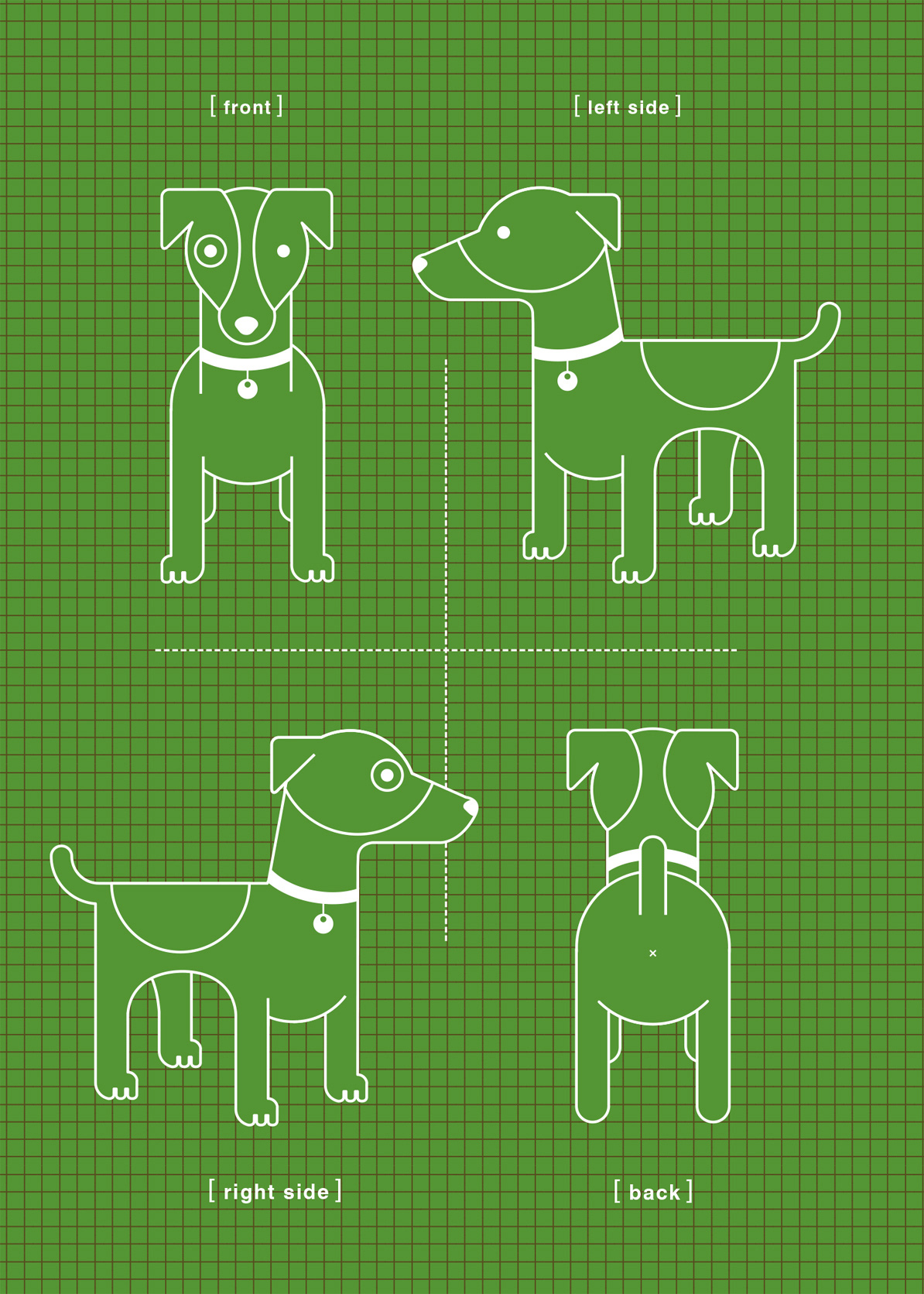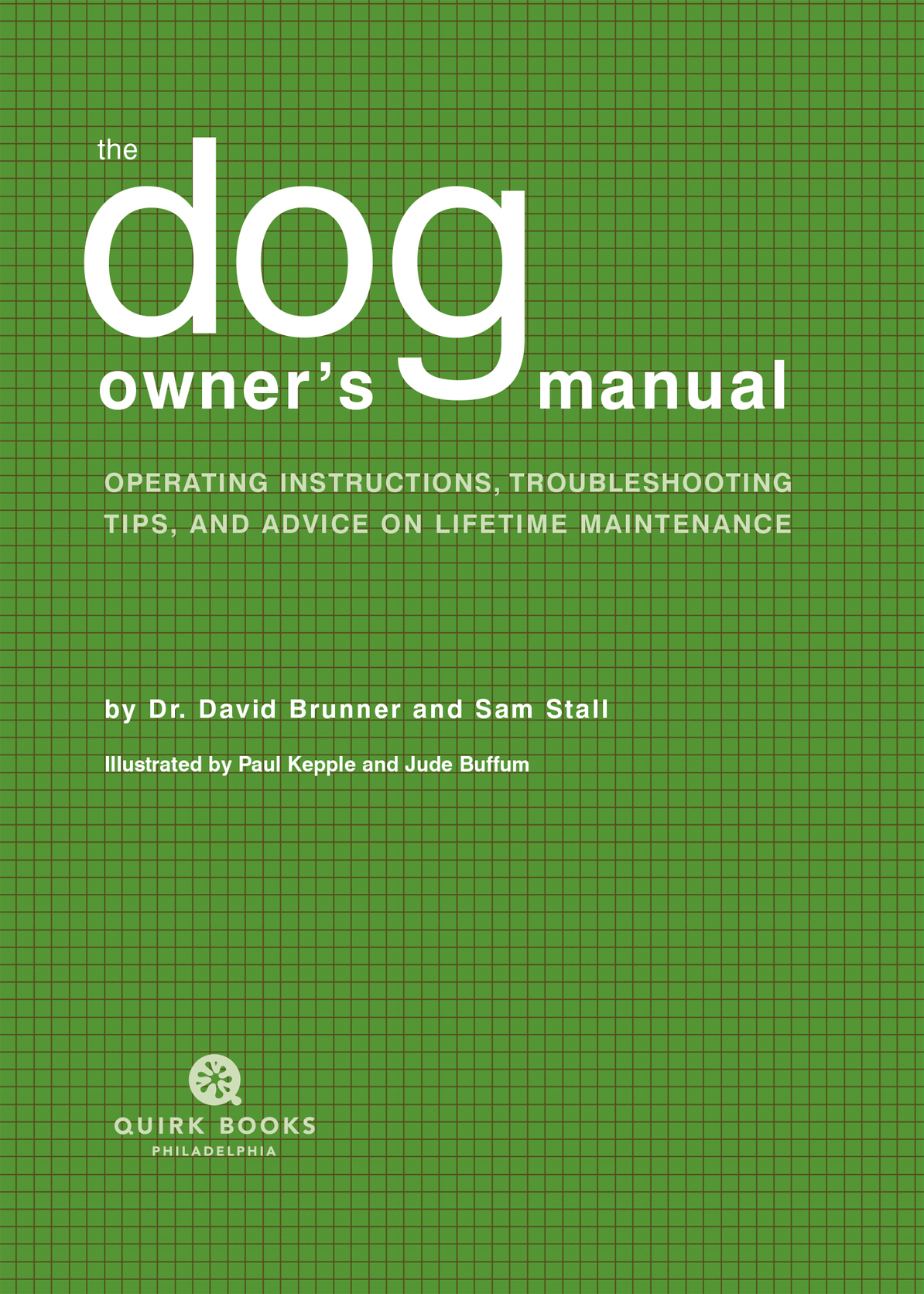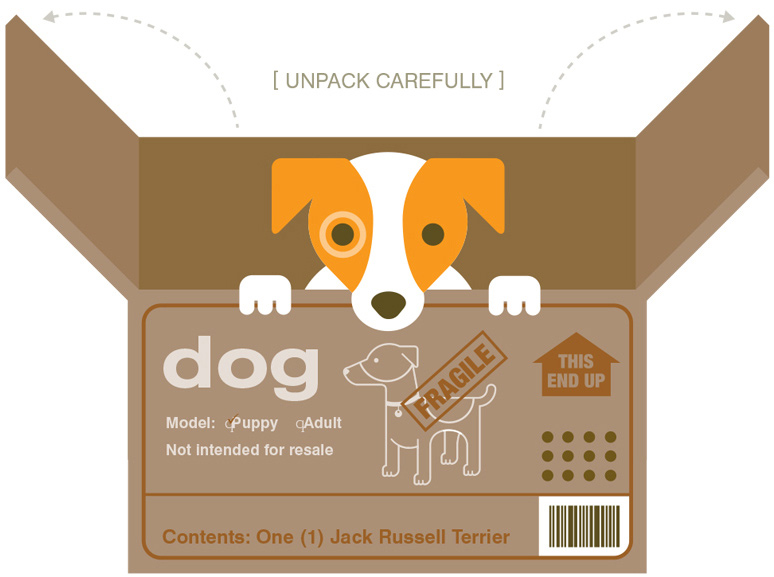Copyright 2004 by Sam Stall and David Brunner
Illustrations 2004 by Headcase Design
All rights reserved. No part of this book may be reproduced in any form without written permission from the publisher.
Library of Congress Cataloging in Publication Number: 2003096236
eBook ISBN: 978-1-59474-768-7
Trade Paperback ISBN: 978-1-931686-85-8
Designed by Paul Kepple and Jude Buffum @ Headcase Design
www.headcasedesign.com
Quirk Books
215 Church Street
Philadelphia, PA 19106
quirkbooks.com
v3.1
Contents
CHAPTER 1:
OVERVIEW OF MAKES AND MODELS
CHAPTER 2:
HOME INSTALLATION
CHAPTER 3:
DAILY INTERACTION
CHAPTER 4:
BASIC PROGRAMMING
CHAPTER 5:
FUEL REQUIREMENTS
CHAPTER 6:
EXTERIOR MAINTENANCE
CHAPTER 7:
GROWTH AND DEVELOPMENT
CHAPTER 8:
INTERIOR MAINTENANCE
CHAPTER 9:
EMERGENCY MAINTENANCE
CHAPTER 10:
ADVANCED FUNCTIONS
Welcome
to Your New Dog!
ATTENTION!
Before beginning this manual, please inspect your model carefully. If any of the standard parts shown appear to be missing or inoperative, consult your dogs service provider immediately.
Whether you have just acquired a new dog or are contemplating getting one, congratulations. This products legendary utility has inspired unprecedented customer loyalty among humans of every culture, age, and locale. With proper care and maintenance, it can accomplish almost any task its owner cares to assign.
The dog is surprisingly similar to other high-tech devices you may already own. Like cars, dogs are available in numerous makes and models. Like PCs, they can be configured to serve different functions. And like home security systems, they can keep you and your property safe and sound.
However, while most such highly developed consumer products come with instruction manuals, dogs do not. This is a major oversight, since the complexity of their programming far exceeds that of even the fastest computers, and their mechanical functions are more varied and subtle than those of the finest automobiles. With proper guidance, this near-autonomous system can master numerous desirable behaviors. It can even provide companionship and love. But used improperly, it can manifest traits inconvenient and/or harmful to you, your family, and your possessions.
Hence this book. The Dog Owners Manual is a comprehensive users guide that explains how to derive maximum enjoyment from your canine. It is not necessary to read it from cover to cover. For ease of use, this book has been divided into 11 sections. If you have a question or problem, turn to any of the following chapters:
offers a primer on the literally hundreds of available dog types, a quick look at important hardware and software variations, and guidance on making the right choice for your lifestyle.
explains how to safely introduce a dog into your home and to its new human and/or animal companions.
covers elementary maintenance issues such as deciphering dog behavior, body language, and play preferences.
offers an overview of factory-installed software (instinctive behaviors) and owner-installed software add-ons (training).
discusses your dogs nutritional requirements, including when to feed, what to feed, and how much to feed.
explains how to handle bodywork and detailing issues, including grooming, bathing, and nail clipping.
covers puppy growth milestones, neutering/spaying, and how to calculate your dogs physiological age.
explains how to monitor a dogs mechanical systems for signs of trouble and how to select an authorized service provider for technical support. Covers everything from minor dings to major realignments.
lists major medical conditions that may afflict canines and outlines possible treatment alternatives.
surveys additional programming options for dogs and offers a brief look at hardware modifications and reproduction.
addresses frequently asked questions about common software glitches, from undue aggression to excessive barking.
When used properly, a dog can provide its owner with endless hours of fun, companionship, and service. Remember, however, that mastering such a complex system requires energy and commitment. As you cope with training setbacks, unauthorized bodily discharges, and programming bugs, remember that the final resulta loyal, loving petis well worth the effort.
Congratulations and welcome to the world of dog ownership!
The Dog: Diagram and Parts List
Though canine physical attributes can vary substantially from one breed to the next, all have the same complement of preinstalled parts and capabilities. If your pet is missing one or more of the parts or systems herein described, contact an authorized service provider immediately.
The Head
Eyes: Most dog breeds come with brown or black eyes, though some varieties are fitted with blue, green, yellow, or even a combination of colors. Each eye has three eyelidsupper, lower, and a third lid in the inner corner. The third lid functions as a windshield wiper, clearing dust and debris from the surface of the eye.
Ears: May come in several styles, including button, floppy, and rose ears. The erect ear (seen on such breeds as German shepherds and huskies) is the standard model once used by all ancient dogs.
Nose: As with the ears, the nose can take many forms and lengths. Colors can vary from black to liver; the color often lightens during winter. In general, the longer the nose the more well-developed the dogs sense of smell. Its wetness increases its effectiveness by dissolving incoming scent molecules for easy analysis. Contrary to legend, a dry nose does not necessarily indicate sickness.
Tongue: While frequently used to taste potential food, the canine tongue is also used to vent excess heat. The movement of air back and forth across its surface (via panting), combined with the evaporation of saliva, serves to regulate body temperature.
Teeth: Dogs have 42 teeth, including six pairs of incisors in front that are bracketed by two pairs of large canines. The rest are molars and premolars, allowing dogs (unlike some predators) to easily add vegetarian fare to their diets, if circumstances dictate.
The Body
Coat: All dogs, even the so-called hairless varieties, have a covering of fur. Its color and/or combination of colors can vary widely, even among members of the same breed. Muscles in the skin allow the hairs to stand up or bristle. Excess shedding or a dull, brittle coat may indicate health problems. (See .)
Output Port: The dogs waste discharge system also functions as a means for identification. The anus is bracketed by two internal anal glands that secrete a strong, pungent odor along with each bowel movement. This acts as an olfactory calling card to other dogs. When canines sniff each others hindquarters, they are in fact investigating the anal glands.









